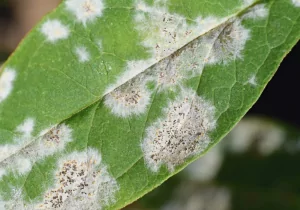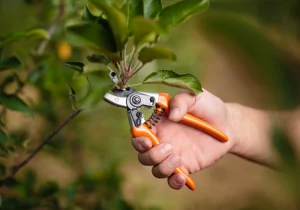Summer is a time of vibrant growth and lush greenery. For home gardeners, maintaining tree health during this season is crucial. Healthy trees not only enhance the beauty of your garden but also contribute to the ecosystem by providing shade, oxygen, and habitats for wildlife. However, summer can also bring a host of tree diseases that threaten this verdant landscape. In this blog post, we’ll explore how to identify and treat common summer tree diseases. You’ll learn valuable tips and methods to keep your trees thriving all summer long.
Recognizing the Importance of Tree Health in Summer
Tree health in summer is essential for several reasons. First, healthy trees can withstand the stressors that come with high temperatures and dry conditions. When trees are in optimal health, they can better resist pests and diseases. Additionally, vibrant trees improve the aesthetic appeal of your garden, creating a serene and beautiful outdoor space.
Unfortunately, the warm and often humid conditions of summer provide the perfect breeding ground for various tree diseases. Ignoring these issues can lead to weakened trees, which are more susceptible to further damage and even death. Understanding the symptoms of common summer tree diseases can help you take preventative measures and ensure your garden remains a green oasis.
Common Summer Tree Diseases and Their Symptoms
 Powdery Mildew
Powdery Mildew
Powdery mildew is a common fungal disease that affects many types of trees. It appears as white or gray powdery spots on leaves, stems, and sometimes fruits. The fungus thrives in warm, dry climates and can spread rapidly.
If you notice a white coating on your tree’s leaves, it’s likely powdery mildew. While it rarely kills trees, it can significantly weaken them, making them more vulnerable to other stressors. To manage powdery mildew, consider removing and destroying affected leaves and branches.
Anthracnose
Anthracnose is another fungal disease that affects a variety of trees, including oak, maple, and sycamore. The disease manifests as dark, sunken lesions on leaves, stems, and fruit. Infected leaves may prematurely drop, leading to defoliation.
This disease thrives in wet, humid conditions. If you observe these symptoms, it’s essential to remove and dispose of infected plant material to prevent the spread. Thin out dense tree canopies to improve air circulation and reduce humidity levels.
Fire Blight
Fire blight is a bacterial disease that primarily affects fruit trees such as apple, pear, and quince. The disease causes blossoms, leaves, and branches to turn black and appear scorched, giving the tree a “burnt” appearance.
Fire blight spreads through rain, insects, and contaminated pruning tools. Pruning infected branches during the dormant season and disinfecting tools can help manage the disease. Additionally, applying appropriate antibiotics during bloom can reduce infection rates.
Leaf Spot
Leaf spot diseases are caused by various fungi and bacteria, resulting in spots on leaves that can be yellow, brown, or black. These spots often merge, causing significant leaf damage and defoliation.
Identifying leaf spots early and removing infected leaves can help control the spread. Fungicide applications may be necessary in severe cases but always follow the manufacturer’s instructions.
Treating and Preventing Common Tree Diseases
Organic Treatment Options
For those who prefer natural methods, organic treatments can be effective against many tree diseases. Neem oil, for instance, is a natural fungicide and pesticide that can help control powdery mildew and other fungal infections. Regular applications can prevent the spread of diseases without harming beneficial insects.
Another organic option is compost tea, which enhances the tree’s immune system. By spraying compost tea on the leaves, you can introduce beneficial microorganisms that outcompete disease-causing pathogens.
Chemical Treatment Options
Chemical treatments can also play a crucial role in managing tree diseases. Fungicides are commonly used to treat fungal infections like powdery mildew and anthracnose. Products containing myclobutanil, chlorothalonil, or copper sulfate are particularly effective. Always read and follow label instructions to ensure safe and effective use.
For bacterial diseases like fire blight, antibiotics such as streptomycin can be applied during bloom. It’s vital to use these products judiciously to prevent resistance development in pathogens.
 Pruning and Cultural Practices
Pruning and Cultural Practices
Pruning is an essential practice for preventing and managing tree diseases. By removing diseased branches, you can prevent the spread of pathogens. Always prune during the dormant season to minimize stress on the tree and reduce the risk of spreading infections.
Cultural practices, such as proper watering and mulching, also play a significant role in maintaining tree health. Water trees deeply and infrequently to encourage deep root growth, and apply mulch to retain soil moisture and regulate temperature.
Best Practices for Maintaining Tree Health in Summer
Regular Monitoring
Regularly inspect your trees for signs of disease, pest infestations, or other stressors. Early detection is key to effective management. Look for changes in leaf colour, the presence of spots or lesions, and any abnormal growth patterns.
Proper Watering Techniques
Proper watering is critical during the hot summer months. Trees generally need about an inch of water per week, either from rainfall or supplemental watering. Water deeply to ensure that moisture reaches the root zone, and avoid overhead watering to reduce humidity around the foliage.
Mulching
Mulching helps conserve soil moisture, suppress weeds, and regulate soil temperature. Apply a 2-3 inch layer of organic mulch around the base of your trees, keeping it away from the trunk to prevent rot. Mulch also adds nutrients to the soil as it decomposes, enhancing tree health.
Fertilization
Fertilizing your trees can provide the essential nutrients they need to thrive. Use a balanced, slow-release fertilizer in the spring to support healthy growth throughout the summer. Be mindful not to over-fertilize, as excessive nutrients can lead to weak, disease-prone growth.
Pest Management
In addition to diseases, pests can also pose a threat to your trees during the summer. Monitor for common pests such as aphids, scale insects, and caterpillars. Introducing beneficial insects like ladybugs and lacewings can help control pest populations naturally.
Maintaining tree health during the summer is essential for home gardeners who want to create a thriving, beautiful outdoor space. By understanding common summer tree diseases and their symptoms, you can take proactive steps to prevent and treat infections. Whether you prefer organic methods or chemical treatments, there are numerous options available to keep your trees healthy.

